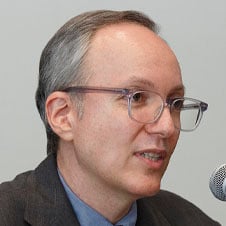Ageism has a long history in health care in the U.S. One example: For years before Medicare was established, in 1965, half of older adults in America had no health insurance at all.
Today, almost all people 65 or older—some 54 million—are covered by Medicare. That’s the good news. The bad news is that older-adult Americans continue to face discrimination in health care simply because of their age.
An AMA Senior Physicians Section education session at the 2024 AMA Annual Meeting explored how ageism continues to affect patients. It hinted at its impact on physicians too.
It happens every day
“Older people in this country experience ‘everyday’ ageism,” said William Jordan, MD, MPH, director of health equity policy and transformation at the AMA Center for Health Equity. This prejudice affects more than 90% of older Americans, and it’s associated with multiple indicators of poor physical and mental health, noted Dr. Jordan, who co-presented the education session with Emily Cleveland Manchanda, MD, MPH, the AMA’s director of social justice education and implementation.
“There's also a kind of ageism that's called internalized ageism,” Dr. Jordan said, adding that this plays on one’s feeling about oneself. “People who have more positive beliefs about aging live, on average, seven-and-a-half years longer. So these kinds of biases really get entrenched.”
Ageism has been linked to numerous negative health outcomes, including higher rates of cardiovascular events, declines in physical function, and higher rates and earlier onset of Alzheimer's disease.
“Unfortunately, we also see, particularly, ageism where we all work—as physicians in the health care setting,” Dr. Jordan said, pointing to a recent survey showing that 20% of older-adult patients reported experiencing medical ageism in health care encounters. Physicians were less likely to recommend procedures due to patients’ ages, even with everything else held the same.
Patients were “less often offered procedures, less often offered things like testing for sexually transmitted infections, less often offered preventive measures—a whole range of medical services are less often offered to older adults, without any justification,” he said. “So this seems to be related to age-related discrimination, even when the data show that there's likely to be an equal benefit regardless of age.”
There are several hypotheses surrounding these outcomes, including “weathering,” which highlights the chronic stress of being exposed to negative attitudes towards particular groups.
New policy aims to address it
Ageism also affects physicians themselves, early and late in their careers. In fact, age intersects with numerous other aspects of social identity.
“There's also ageism against younger people,” Dr. Jordan said, noting a study of women physicians who reported that they had experienced sexism most at the beginning of their careers and less as they progressed in their careers. “It also potentially points to the fact that people that persevered through a lifetime of being discriminated against maybe have a more positive outlook on things than their peers.”
Meanwhile, older adults make up about 30% of the U.S. physician workforce. In 2021, the AMA adopted policy (PDF) on appropriate criteria for assessing physicians across the competency continuum.
Learn more with the AMA about nine principles to guide physician competence assessment at all ages.
At the Annual Meeting in June, the AMA House of Delegates took action to adopt as AMA policy the World Health Organization’s definition of ageism, which “refers to the stereotypes (how we think), prejudice (how we feel) and discrimination (how we act) towards others or oneself based on age.” The definition now embedded in AMA policy further states that “structural ageism is the way in which society and its institutions sustain ageist attitudes, actions or language in laws, policies, practices or culture.”
The House of Delegates also directed the AMA to:
- Establish a definition of “age equity,” and consider adoption of the AGE Platform Europe vision: “Age equity is an inclusive society, based on well-being for all, solidarity between generations and full entitlement to enjoy life, participate in and contribute to society. At the same time, each person’s rights and responsibilities throughout their life course have to be fully respected.”
- Review and amend policies regarding discrimination, bias and microaggressions, and add age or ageism during the sunset review process.
- Routinely incorporate intersectional approaches to ageism.
- Conduct ongoing advocacy for hospital and regulatory policy changes focused on individual physicians’ care quality data rather than their age, as well as educational outreach to AMA members.
- Work with the World Medical Association and other interested stakeholders to have AMA’s work significantly inform the global health organization's work on ageism.
The AMA Senior Physicians Section gives voice to, and advocates on, issues that affect older-adult physicians who are working full time, part time or retired. Learn more.




